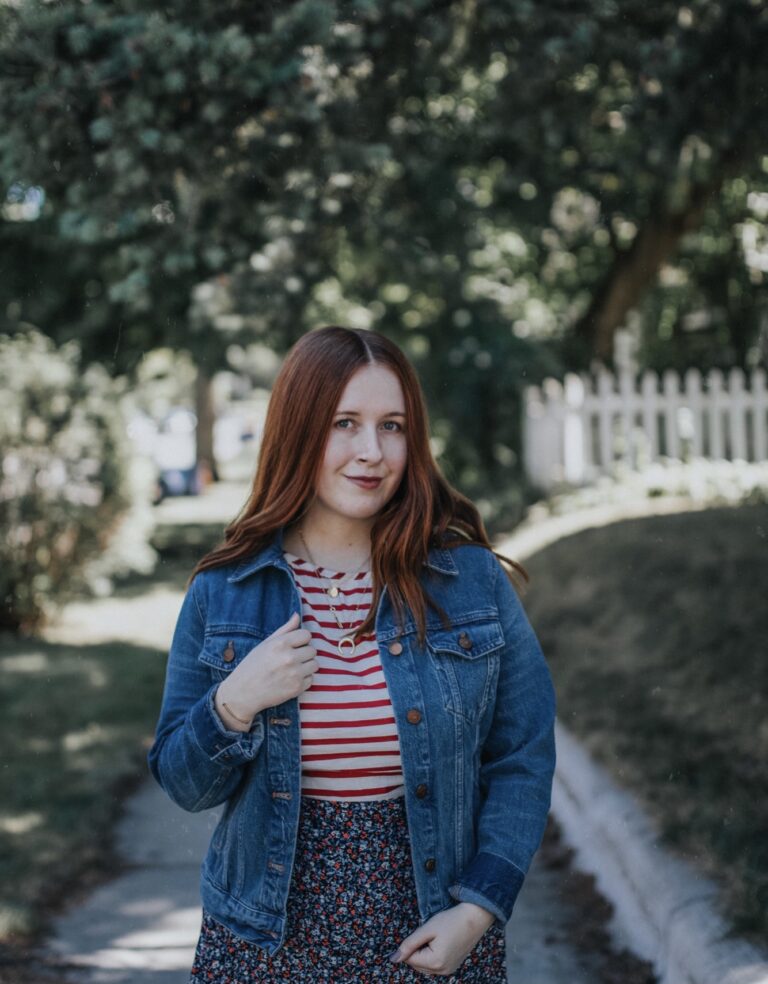If you have been following along on Instagram this year, you probably already know I am shopping less in 2020. While my #fourwardthinking challenge has been successful thus far, I did not begin the year with a clear plan for my closet.
In fact, I did not know closets needed plans — I mean, it’s just a closet after all.
So, I started buying less. I made wishlists, hardly bought a thing on impulse, and supported conscious brands… but my wardrobe still felt like a collection of individual items not meant to mix and match together. It turns out I am not alone. I asked my IG followers what their biggest shopping and/or closet problem was and narrowed the responses down to three themes to tackle in a mini series on my feed. I want to expand on those topics here…
PROBLEM NO. 1
“I don’t actually know what I have. It has been a while since I have taken a full inventory of my closet.”

This is for the people who rotate through the same outfits every week, own multiple variations of the same piece, and have items that don’t match anything else in their closet. Being an #outfitrepeater is not a crime (it’s highly encouraged in the slow fashion community!), but wearing the same few things over and over because you haven’t done a recent inventory is not ideal. Have you ever bought something new and brought it home only to realize you already have a piece just like it? Oops! It’s happened to me… more than once.
SOLUTION > 3 action items to simplify your current closet situation
Take Inventory
I am encouraging you to make a list of everything you have. If this sounds overwhelming, try to tackle one category per day and start with something easy… like dresses or sweaters. If lists really aren’t your thing, consider doing pictures of items categorized instead. The goal is to wrap your brain around the size of your wardrobe and familiarize yourself with everything you’ve got on hand.
Put Off-Season Clothes in Storage
I didn’t start doing this until recently. As a recovering shopaholic, I want a change in season to come with a fresh wardrobe… without the cost of new clothes. I’ve been able to recreate the feeling of a winter “shopping spree” by storing my hats and sweaters away for the summer. Keep these items in an extra closet or under the bed. You will simplify getting dressed in the morning when your only options are pieces that work for the current season.
Pull Out Your 5 Favorite Pieces
We can learn from our favorite buys. Compare your top 5 pieces. Maybe these are the ones you wear the most or the items you feel your best in. Do they share anything in common? The next time you consider adding a piece to your closet, ask yourself if it will replace one of your top 5 favorites. Would you be willing to get rid of a favorite piece in lieu of this new item?
PROBLEM NO. 2
“I make impulse buys on items I do not love because I have trouble distinguishing between my wants and my needs.”

This one is for my friends who own a piece they have never worn before, often buy new items on the spot, and are constantly looking for the next best thing. Yup. It’s me. I used to love the dopamine rush something new brought. The excitement would wear off quickly though and I’d be back on the hunt for more. It wasn’t a healthy routine for me, my wallet, or my closet (because space is limited).
SOLUTION > 3 action items to s l o w d o w n
Start a Wish List
I suggest storing your wish list in a place you’ll always have access to… meaning your phone. Is there something you wish you had every time you got dressed? Do you have your eye on an item currently out of your price range? The next time a pair of shoes is calling your name from across the store… because there is only one pair left in your size… stop, breathe, and consult your list. Would you prefer this random pair of shoes you’ve only just met over a piece that has been hanging on your wish list for months?
Play Hard to Get
Seriously… it’s that simple. The most shocking advice I ever got was to never buy something the first time you see it online or in-store. You mean… I shouldn’t wander aimlessly around the mall hoping a fabulous new something… anything really… finds ME? It was a hard pill to swallow. You are better off waiting. Our clothing is a long-term commitment. You wouldn’t marry someone the first time you lay your eyes on them at the mall… so put some serious thought into your future clothing purchases to avoid divorcing them later.
Create a Personalized Shopping Diet
In 2020 I have put a monthly limit on new buys as part of my #fourwardthinking challenge. I count all apparel, shoes, accessories, jewelry, and swimwear. Your “shopping diet” should meet you where you’re at right now. Set yourself up for success and leave room for mistakes.
PROBLEM NO. 3
“I don’t have the financial means to invest in my wardrobe, so I keep buying cheap alternatives.”

This is dedicated to the people who believe they can’t afford the quality they deserve, are always turned off by high price tags, and have to replace worn items every year. I used to think more was better when it came to my closet: more trends to try, more colors to wear, and obviously more shoes… what could be bad about more shoes? Clothing hasn’t always been cheap. The low prices of fast fashion have come at a high cost for the planet and the workers making our clothes in developing countries.
SOLUTION > 3 action items to change your perspective on closet finances
Calculate Cost Per Wear
This is the price I like to evaluate when shopping for something new. It forces me to realistically consider how the item will fit into my wardrobe. Take the initial cost of the garment divided by the estimated number of wears.
A new $200 dress you will wear to two weddings before deciding it can never show up on your IG feed again? That is $100 per wear and probably not worth the investment. Consider renting an outfit instead!
A classic $200 pair of jeans you will likely wear twice a week for the next 5 years? That is $.38 per wear (or $.77 per wear if you only wear them once a week). This cost per wear may be worth the investment, especially if you buy from a quality brand focused on giving longevity to their products.
Buy Secondhand and Thrift
Although it takes more time and energy than fast fashion’s typical “add to cart and then forget about it until it shows up at my door” method, thrifting is a great way to find designer pieces at a fraction of the cost. I scored a vintage leather jacket this year for a sliver of the cost one retails at. Shopping secondhand also keeps clothes in the circular economy longer and ultimately out of landfills.
Aim for #30wears
This is a movement I learned through the slow fashion community online. We should aim to wear each of the pieces in our closet at least 30 times… which is more than you’d think! I have a long plaid blazer I absolutely LOVE and swore I’d worn at least 30 times — when I filled it in on my wardrobe tracker, it actually only had 7 wears.
If you’ve made it this far… wow! I am impressed. You now have 9 action items to lead you towards a more conscious closet. Remember, good things take time. As always, I am here to continue the conversation and answer any questions you may have at gingandhoney@gmail.com or over on the gram.


